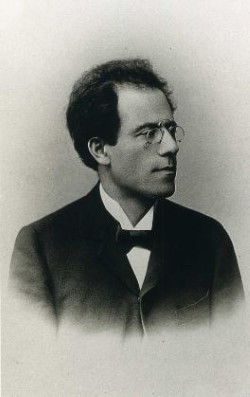
When it came to his music, particularly its orchestration, Gustav Mahler (1860-1911) was fussy. Starting with his Symphony No. 5, which he began in 1901 and initially completed in 1903, Mahler was never completely satisfied with anything he composed; he was always reworking this, re-orchestrating that, fussing to a degree that pretty much everything composed between 1901 and his death in 1911 must be considered a “work in progress”.
Mahler’s fussing with his Fifth Symphony began soon after its completion in 1903. After a reading in 1904 he removed a considerable bit of the percussion parts. In 1906 he again made significant revisions in anticipation of a performance in Amsterdam. In 1908 he revised the symphony yet again. Finally, in early 1911, just a few months before his death on May 18, he wrote:
“The Fifth is finished. I have been compelled to re-orchestrate it completely. I cannot understand how I could have written so much like a beginner at that time [meaning 1901-1903]. It is clear that the method I had used in the first four symphonies deserted me altogether, as if a totally new message demanded a new technique.”

That “new message” to which Mahler refers is the storyline, the “program” of the Fifth Symphony. It’s a program about nothing less than the stages of grieving, a symphonic “Kübler-Ross model” composed 23 years before the birth of Elisabeth Kübler-Ross (1926-2004), who first articulated her theory of the “five stages of grieving” in 1969, 63 years after Mahler had already done so in his five-movement Symphony No. 5! Of his “new message” described by his Fifth Symphony Mahler wrote in the same letter quoted above:
“It [the symphony] is the sum of all the suffering I have been compelled to endure at the hands of life.”
And suffer Mahler did; his childhood was marked by domestic abuse, death (of his siblings) and grief; his adulthood was marked by constant professional agita, illness, and the loss of a young daughter in 1907.
Mahler’s Fifth is, indeed, a radical departure from his earlier work, one that reflects the contemporary Viennese Expressionism rather than nineteenth century Romanticism. The symphony does not tell a narrative story as did Mahler’s first four symphonies but rather, typical of its Expressionistic roots, it is a “psychodrama”, tracing a progression of conscious and unconscious emotional reactions and states in the wake of the death of a loved one.
The five movements of the symphony clump together into three large parts… continue reading, only on Patreon!
Become a Patron!